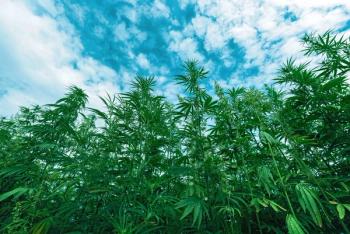
Hemp Increasingly Becoming a Building Material in the US
The plant-based material hempcrete is slowly being used in more construction projects in the US, highlighting its versatility.
In April 2024, the Lower Sioux Indian Community in Minnesota plans to open a 20,000 sq ft, $6.2 million onsite hempcrete facility, having started using the material in housing construction in 2016 (1). The goal is to help house residents on the reservation, and many properties of the hempcrete—such as its resistance to mold, pests, and fire, plus its ability to regulate internal temperature—proved to be useful and efficient in this endeavor (1,2). Several houses have already been built on the land with dozens more planned (1).
The growing and use of hemp on the tribal lands had faced some pushback initially, though it was eventually embraced (1). “Just the word ‘hemp’ has a stigma surrounding it,” stated project manager Danny Desjarlais in an article in The Guardian (1). “Some of the elders didn’t like that we were even growing hemp before we started building with it.” It has been noted, though, that, by law, hemp cannot contain more than 0.3% of the psychoactive substance tetrahydrocannabinol (THC) (2).
Hempcrete, developed in the 1980s, is made from the hemp stalk combined with water and lime to create a mix that can be turned into panels or sprayed onto a structural frame (1,2). Hempcrete also sequesters carbon, making it an eco-friendly building material option (2). Additionally, some of the buildings in the Lower Sioux Indian Community reportedly cost 20% less than conventional construction (1).
“This program is a great example of a housing project that was driven by the community, and one that can inspire the state as we continue to invest in housing preservation, creation, affordability and sustainability,” stated Peggy Flanagan, Lieutenant Governor of Minnesota (1).
Long term plans for the hemp products in the Lower Sioux Indian Community include sales of prefabricated hempcrete materials and of the unused parts of the plant itself, potentially creating job opportunities (1).
In March 2024,
Furthermore, according to a recent news release from the US Hemp Building Association, the International Code Council—the governing body for building codes in the US—published its 2024 International Residential Code, which now included a hemp-lime appendix for the first time (4). While industrial hemp in the US only became legal with the passing of the 2018 Farm Bill, hempcrete has been used in insulation in Europe for the past 30 years and historical evidence has shown it has been used over hundreds of years (4,2). Presumably, the presence of the hemp-lime index will help perpetuate the increase of hemp building materials in more projects across the country (4).
References
- Nelson, K., ‘A roof over our people’s heads’: the Indigenous US tribe building hempcrete homes
https://www.theguardian.com/us-news/2024/apr/16/hempcrete-indigenous-tribe-minnesota (accessed Apr 16, 2024). - Wesseler, S., Could your next home be made of hemp?
https://yaleclimateconnections.org/2024/02/could-your-next-home-be-made-of-hemp/ (accessed Apr 16, 2024). - McEvoy, E., Oregon State University Receives $10 Million for Hemp Research and Development
https://www.cannabissciencetech.com/view/oregon-state-university-receives-10-million-for-hemp-research-and-development (accessed Apr 16, 2024). - Lotus, J., Hemp-Lime Appendix Published in 2024 US Residential Housing Codes
https://ushba.org/hemp-lime-appendix-published-in-2024-us-residential-housing-codes/ (accessed Apr 16, 2024).
Newsletter
Unlock the latest breakthroughs in cannabis science—subscribe now to get expert insights, research, and industry updates delivered to your inbox.





